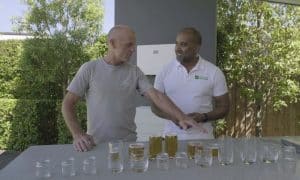A new method of harvesting fuel from water developed by scientists from University of North Carolina could answer the question of how to effectively store solar power for use long after the sun goes down.
An entire industry has grown around storing the power generated by solar power systems, from banks of lithium-ion batteries to molten-salt technology, but UNC researchers believe chemistry will provide the key to large-scale solar power storage.
“So called ‘solar fuels’ like hydrogen offer a solution to how to store energy for night time use by taking a cue from natural photosynthesis” says Tom Meyer, Arey Distinguished Professor of Chemistry at UNC’s College of Arts and Sciences. “Our new findings may provide a last major piece of a puzzle for a new way to store the sun’s energy – it could be a tipping point for a solar energy future.”
Meyer’s team used a dye-sensitized photoelectrosynthesis cell, or DSPEC (an organic solar cell which mimics the process of photosynthesis in plants), to produce hydrogen fuel by separating water molecules into atoms. While hydrogen atoms are retained and stored for energy, oxygen is released into the atmosphere. Because the entire process is solar powered, it is also extremely efficient.
But according to Meyer, splitting water is a huge challenge.
“You need to take four electrons away from two water molecules, transfer them somewhere else, and make hydrogen, and, once you have done that, keep the hydrogen and oxygen separated. How to design molecules capable of doing that is a really big challenge that we’ve begun to overcome.”
Meyer designed a molecule, called a chromophore-catalyst assembly, which “steals” the four electrons needed from water. Thousands of these assemblies then become tethered to a light-absorbing nanoparticle which kick-starts the production of hydrogen fuel.
Meyer’s breakthrough came by coating the nanoparticle, atom by atom, with a thin layer highly-reflective titanium dioxide. This allowed electrons to flow far more rapidly than before and were available to make more hydrogen fuel.
Meyer says the system requires no external power, and operates using existing technology.
“When you talk about powering a planet with energy stored in batteries, it’s just not practical,” said Meyer. “It turns out that the most energy dense way to store energy is in the chemical bonds of molecules. And that’s what we did – we found an answer through chemistry.”







































